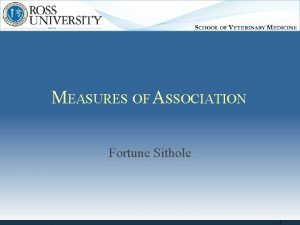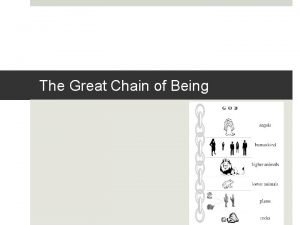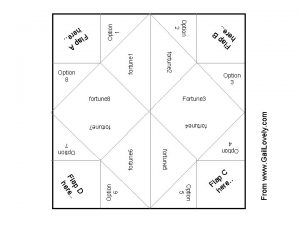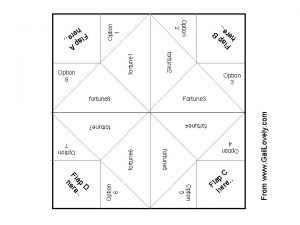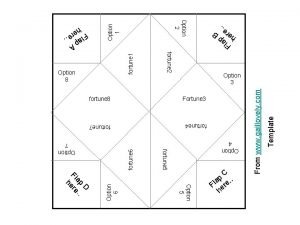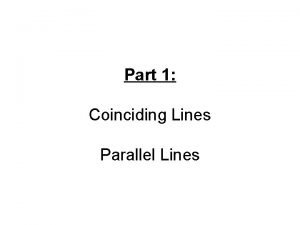Living Graphs Fortune Lines RationaleImportance Living graphs fortune











- Slides: 11

Living Graphs & Fortune Lines

Rationale/Importance Living graphs & fortune lines are related activities, which both relate to graphical representation. l The use of graphs rarely excites or creates debate and argument, but living graphs change all that. They give figures and lines real context and allow students to make connections between the abstraction of the graph on the page and the people & events that lie behind it. l

l The activity makes pupils think, talk and ask questions. The strategy heightens awareness to the fact that a variety of answers is sometime possible. It reinforces the importance of explanation and encourages pupils to think beyond what appears on the page.

What is the difference between fortune lines & living graphs? l While living graphs start with a line graph and work towards an interpretation of the line, fortune lines start with a narrative and use the plotting points as a route to exploration and meaning. Graduations of phenomena such as emotions or power are easier to explore through a graph than by words and really facilitate discussion over differences in interpretation.

Teaching Procedure l Pupils are given a pre-printed graph or draw one of their own. Generally in previous lessons they have studied the relevant subject content. They are then asked to place a number of statements relating to people, events or things people may have said on the graph. l 10 statements max to avoid over kill.

Launching the Activity l l When might they have had their biggest hit? When might the lead singer have married a celebrity? When might the band have been signed by a big record company? When might they have appeared on The National Lottery/ childrens TV?


Debrief & Metacognition Avoid going through all the statements in numerical order or it can become tedious. l Instead you may ask - which do you have the best explanation for? Which was the easiest to place? Which did you have the most arguments for? l Alternatively you could focus on distinct sections of the graph and fill in the story behind each, using the statements the pupils have chosen. l

l Encourage the pupils to debate with each other if they have alternative views. l Do not forget to discuss the thinking process. How did they complete the activity? Numerically? Or did they look at how the statements relate to each other first – if so why? Chronological?

Variations Once they have placed the statements you could ask them to classify them (Cause, effect) with colours. l Pupils could be invited to create their own statements and swap them with another group. l Fortune lines – Pupils could plot the emotions or fortunes of two characters for the same event. How do the two characters interact? Is one influencing the other and how is this happening? These ideas could be annotated on to the graph. What if……. . Add or remove an event. l










